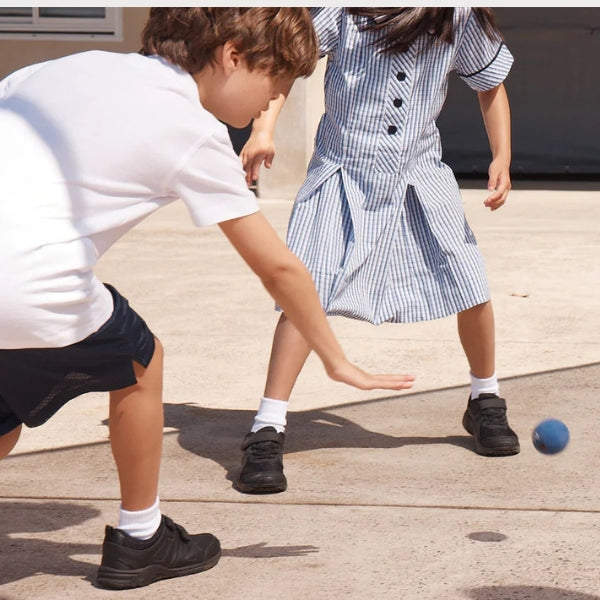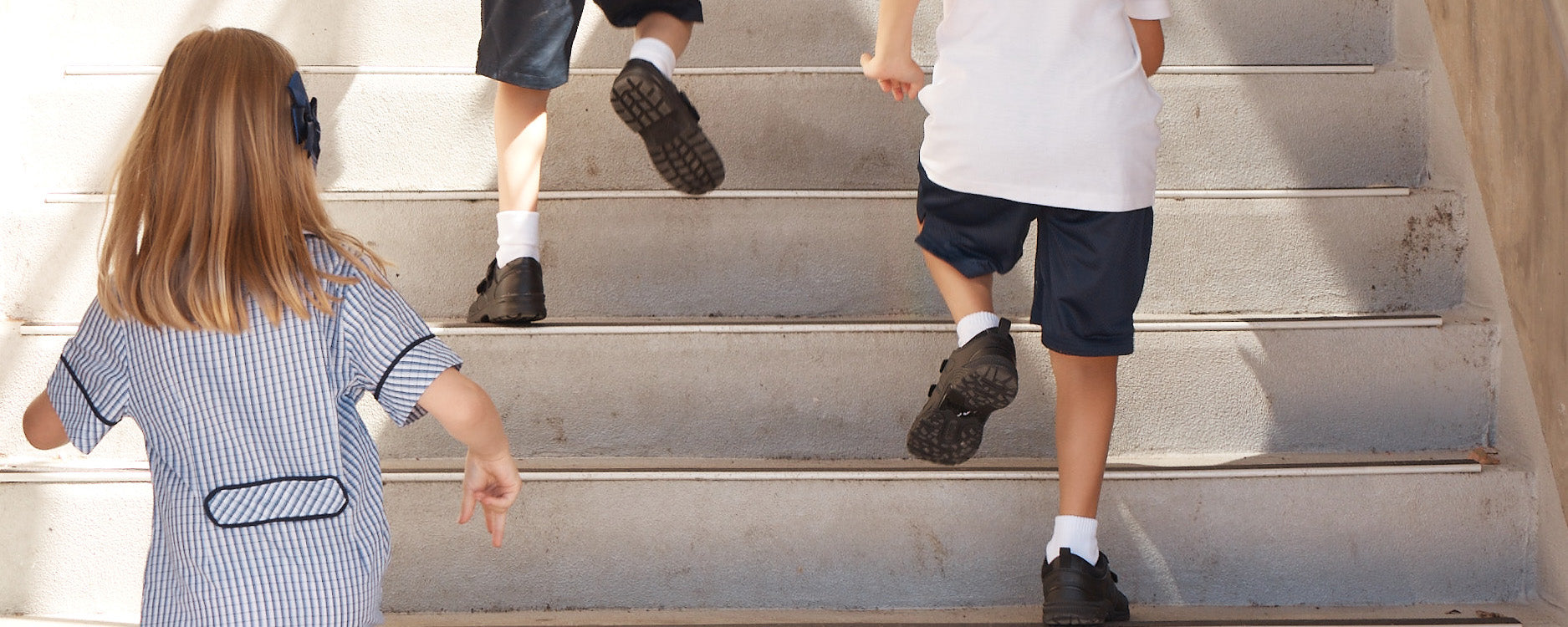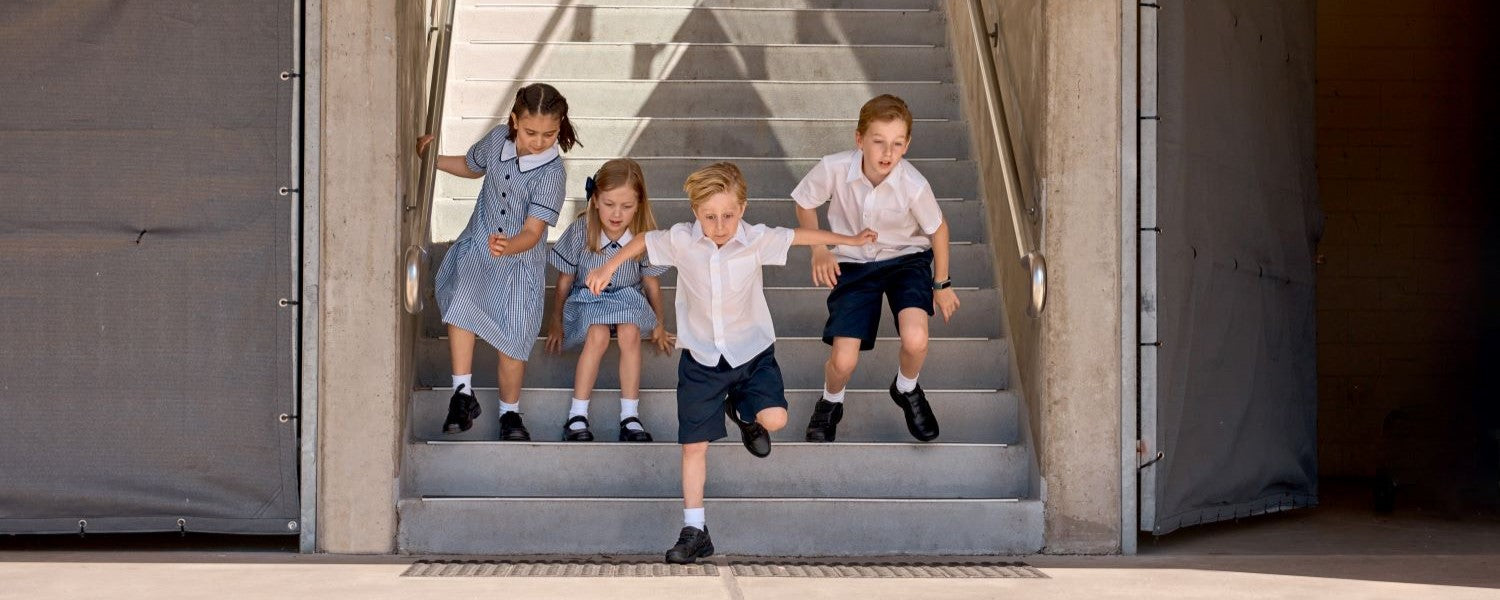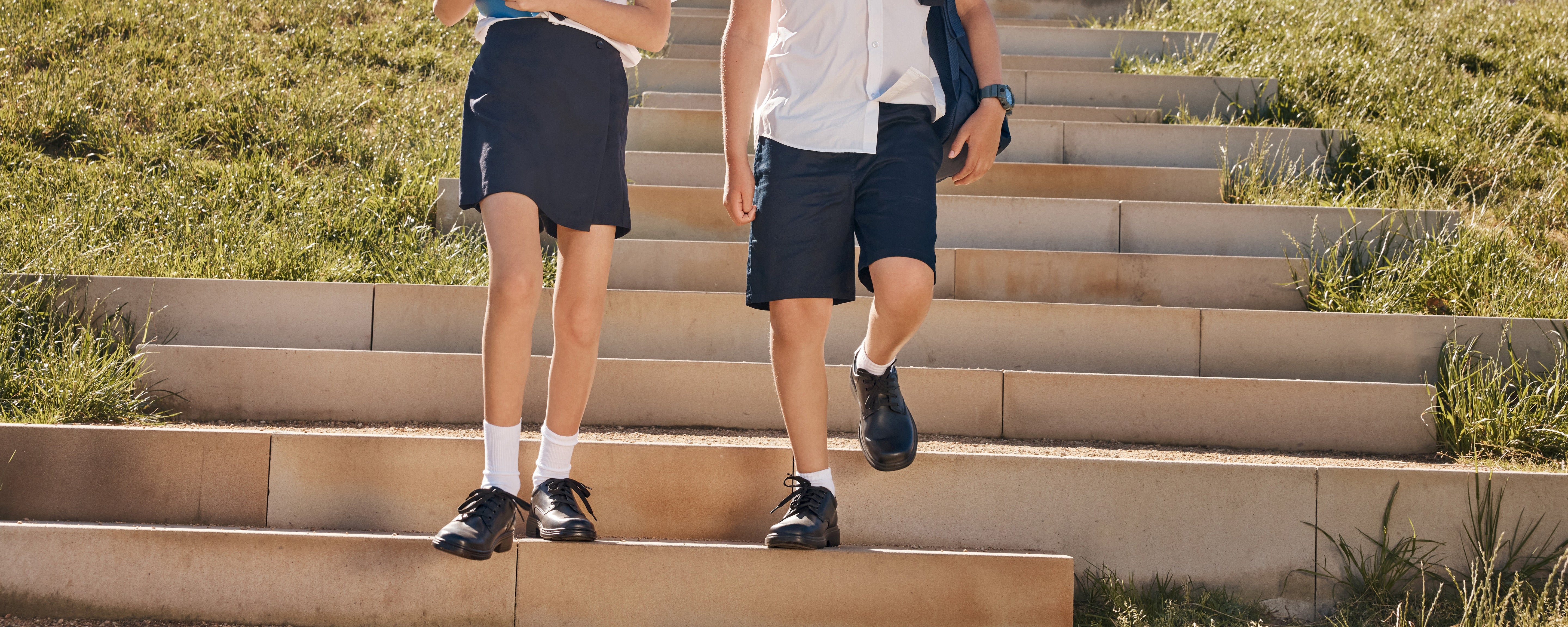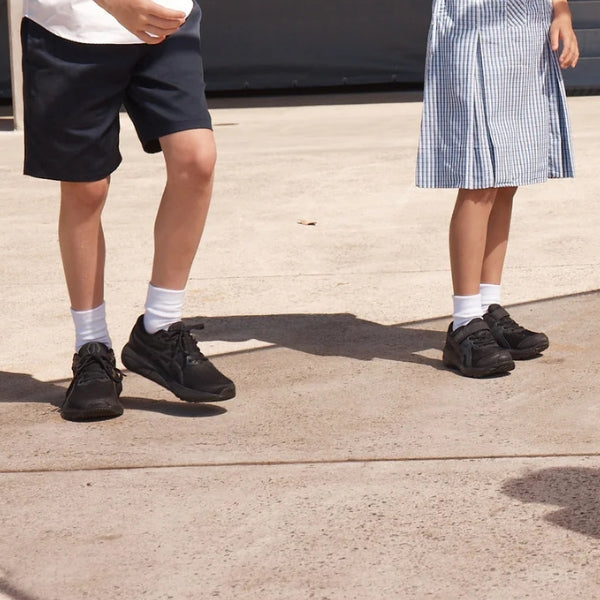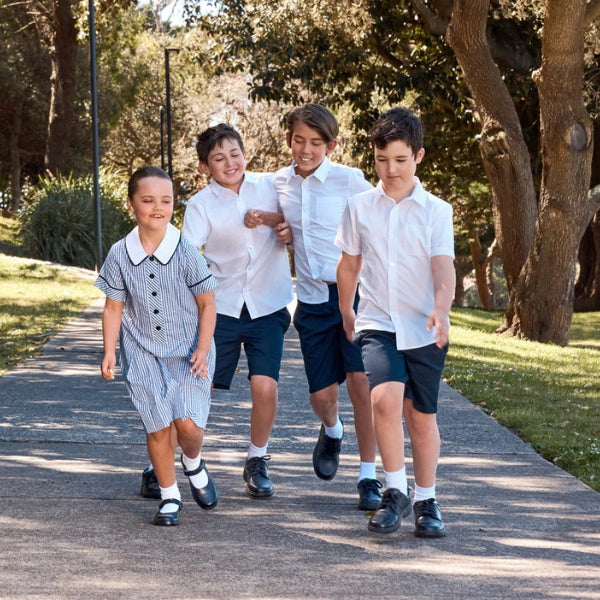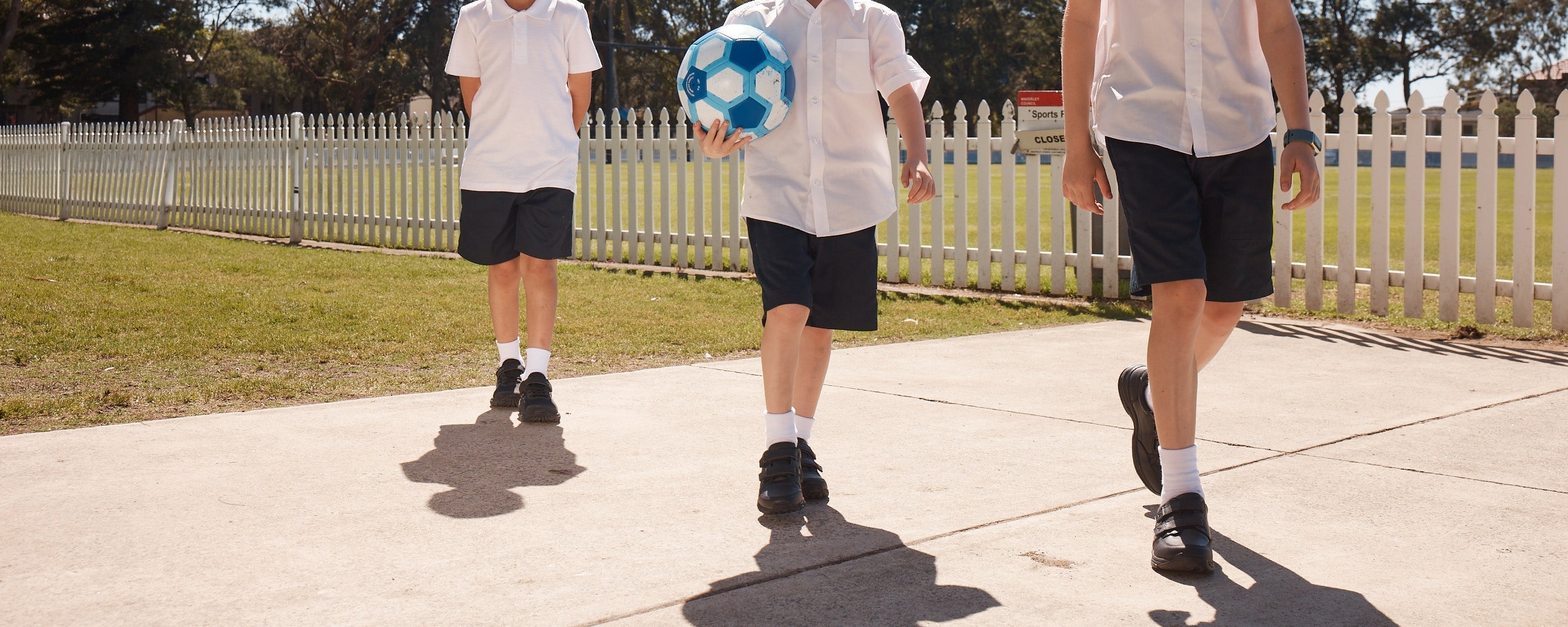
Which Sole Material is Best for School Shoes?
Your child’s foot health begins with a shoe that supports them every step of the way, and that shoe needs the best sole material for your child. Like so many things in parenting, shoe shopping seems deceptively easy. You get out a tape measure, ask your kid “which colour do you like best?”, and call it a day. But then you realise, there’s a lot more to it than you thought, and get tangled in a string of endless google searches, group chat messages, and of course, driving up to the Shoes & Sox Fit Squad to vent all your questions.
The sole material of your child’s school shoe sets up the durability and quality of the shoe itself, as well as providing comfort and support. You want something that’s going to support your child’s lifestyle, as different materials are better for different kids. The main types you’ll be faced with include rubber soles, leather soles, and sports-style soles.

What should you be looking for?
Emily Smith, Sports Podiatrist and founder of Emily Braidwood, says that the sole material of your child’s shoe is “critical for comfort, support, grip, and durability.” Factors that should weigh heavily in the decision include the shock absorption of the sole so that your kid can run around without sore feet, good traction, protection from the elements (because every kid loves a rain show), and of course, comfort. Extra points go for durability because your kid deserves shoes that go the distance.

Rubber soles
Rubber is a common choice, due to its combination of flexibility and hard-wearing qualities. It’s protective against elements whilst still keeping feet comfy. Emily Smith says that rubber soles are “ideal for traditional school shoes, they offer excellent shock absorption and durability.” Find out more on this Aussie podiatrist's thoughts on rubber soles here (link to blog).
This material is certifiably school-proof, with great traction that prevents slipping and shock absorption that takes the pressure off your little one’s body.
Leather soles
Since ancient times, back when there wasn’t any distinction between the shoe and the sole, leather has been a favoured sole material. It’s breathable and molds well to the foot, but can be pretty firm and heavy for kids shoes. If you’ve got an active little one, this option might not be for you.

Sports-style soles (Rubber, EVA)
These shoe soles, according to Emily Smith, are best for very active kids, offering lightweight, cushioned soles. Sports-style soles include the aforementioned rubber, or an EVA sole.
An EVA shoe sole is made from plastic to mimic rubber but be even softer and more flexible, so it bends with the foot and supports natural movement. This material balances lightness and comfort with shock absorption or durability, making it a bit of an all-rounder.
Interestingly, EVA is the sole material of choice for almost every major top line athletic shoe brand.










